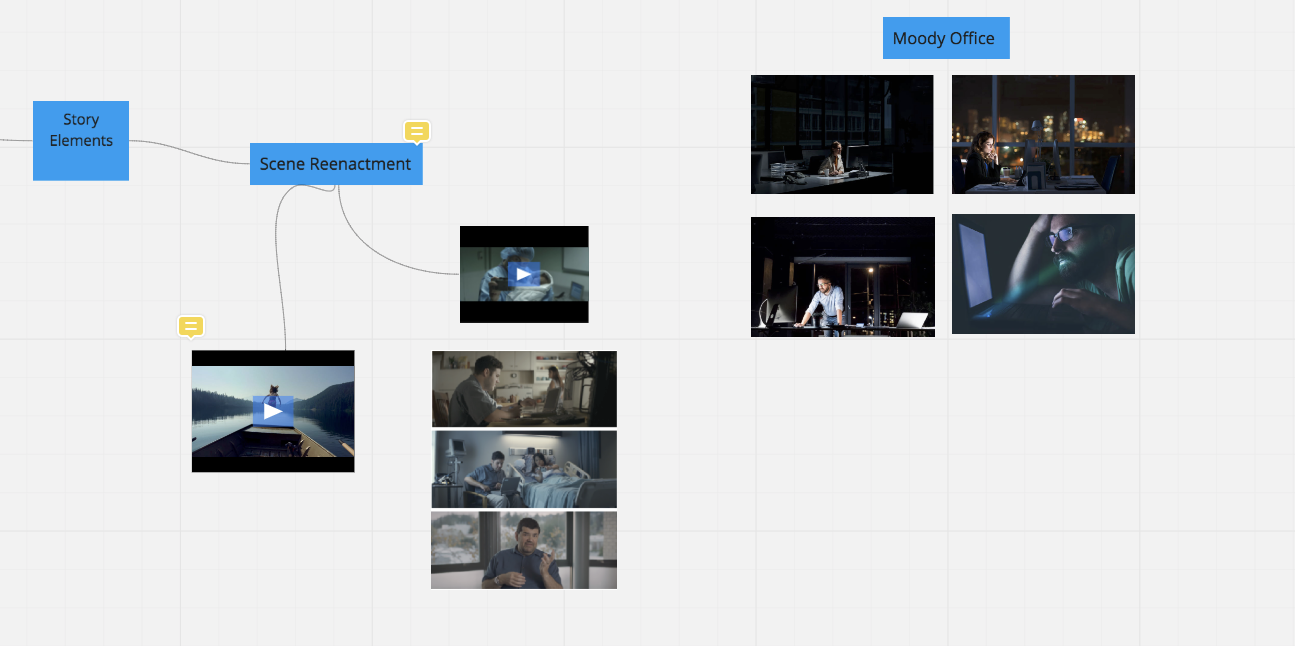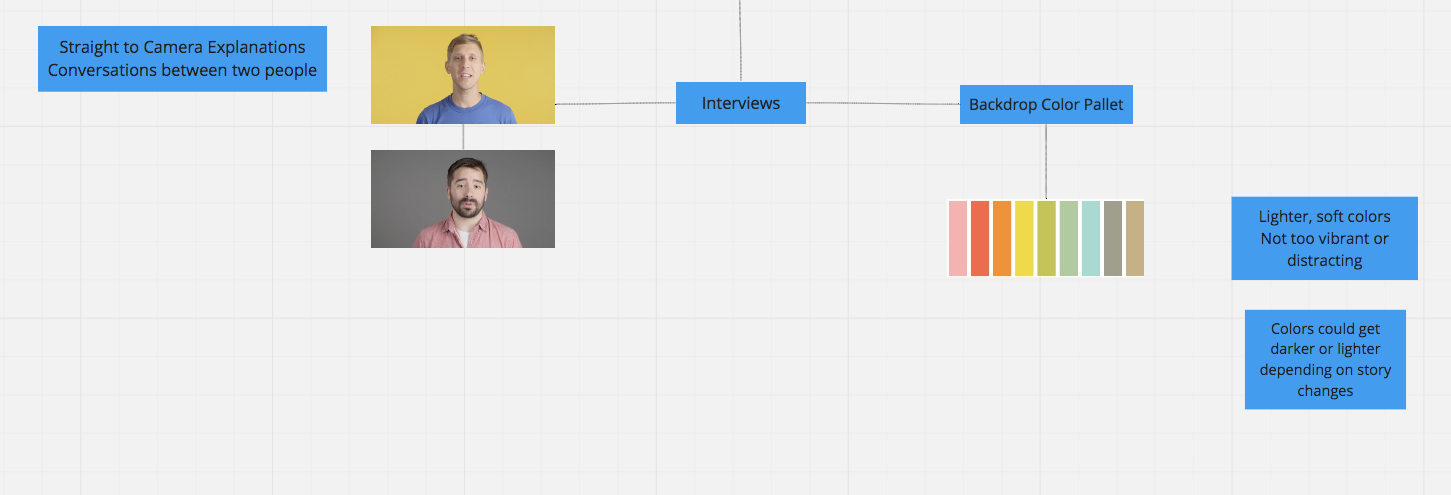Casey Stegman, writer, Eric Kramer, animator, and Kieran Moreira, director, talk about finding inspiration and setting the tone during the creative process. Casey discusses how they developed the style of the film, Kieran walks through the decision to use specific video equipment to support the overall style, and Eric considers how the graphics were integrated.
We've included a snapshot of the conversation, but you can also listen to the full conversation with our embedded player or download the MP3.
Casey: We were looking around for different sources of inspiration. One film was The Big Short, was about the 2008 financial crisis. But it’s not as down and dour as you would think. In fact, Adam McKay, the writer and director for that film— his background was doing a lot of Will Ferrell movies—decided, “Hey, I’m going to take the financial crisis and tell my audience about each aspect of it.” But not in a way that dumbed it down for audiences who maybe understood a little bit more about the financial crisis.


Inspiration for the visual style. Photo credit: Kieran Moreira.
So they would have these asides when they brought up a subject—like credit default swaps—where you’d have an expert turn to camera and break the fourth wall* and explain it using analogies and metaphors that were understandable but also kind of playful in the explanation.

Orran Krieger in Creating ChRIS chapter 2
Kieran: Because it was so important that we had our subjects look at camera, that kind of led us down the path of using a new piece of equipment we’d never used before, which is called an EyeDirect. It is basically a piece of equipment that you place in front of the camera, and it reflects the interviewer’s face onto the lens.
Typically, you have your subject look at the cold barrel of the lens, which can seem impersonal, and your subject’s always darting their eyes away. This device locks them in because you’re looking at the person you’re talking to. It was critical that we have our subjects be comfortable and feel like they were having a conversation with the audience.

Testing the EyeDirect with Brett Abramsky. Photo credit: Kieran Moreira
 Rachel Rooney makes adjustments during Orran’s interview. Photo credit: Kieran Moreira
Rachel Rooney makes adjustments during Orran’s interview. Photo credit: Kieran Moreira
And another idea we thought could be useful in this style was using a green screen for the interviewees’ backdrops.
Eric: Cutting out the green screen is certainly harder than just shooting on a colored background. It allowed us more flexibility and more leverage to change the background out. If the colors were too extreme and not working, we were able to layer in the graphics that made the subjects feel more part of a cohesive world. Some of those colors were just really bright when they came through on the screen after color correction, and it made it hard to see some of the graphics that were there.


Examples of the graphics from the Creating ChRIS video series
We had to walk the line of a serious topic but also with a more playful kind of style. We didn’t want to go too dark and heavy, but we also didn’t want to go so fun and playful that the subject couldn’t be taken seriously.
Creating ChRIS is a video series from Red Hat that shows what happens when passionate visionaries and open technologies come together. Born out of a tight partnership between Boston Children’s Hospital, the Massachusetts Open Cloud (MOC), and Red Hat, the series follows a group of researchers as they develop the ChRIS Research Integration System—an open source, web-based medical imaging platform that greatly increases the speed at which medical professionals can analyze medical images such as MRIs.
This is part two of a five-part blog series that goes behind the scenes on several aspects of the project. (See part one.) Follow the Open Studio blog for the rest of the series coming soon.
執筆者紹介
類似検索
チャンネル別に見る
自動化
テクノロジー、チーム、環境にまたがる自動化プラットフォームの最新情報
AI (人工知能)
お客様が AI ワークロードをどこでも自由に実行することを可能にするプラットフォームについてのアップデート
オープン・ハイブリッドクラウド
ハイブリッドクラウドで柔軟に未来を築く方法をご確認ください。
セキュリティ
環境やテクノロジー全体に及ぶリスクを軽減する方法に関する最新情報
エッジコンピューティング
エッジでの運用を単純化するプラットフォームのアップデート
インフラストラクチャ
世界有数のエンタープライズ向け Linux プラットフォームの最新情報
アプリケーション
アプリケーションの最も困難な課題に対する Red Hat ソリューションの詳細
オリジナル番組
エンタープライズ向けテクノロジーのメーカーやリーダーによるストーリー
製品
ツール
試用、購入、販売
コミュニケーション
Red Hat について
エンタープライズ・オープンソース・ソリューションのプロバイダーとして世界をリードする Red Hat は、Linux、クラウド、コンテナ、Kubernetes などのテクノロジーを提供しています。Red Hat は強化されたソリューションを提供し、コアデータセンターからネットワークエッジまで、企業が複数のプラットフォームおよび環境間で容易に運用できるようにしています。
言語を選択してください
Red Hat legal and privacy links
- Red Hat について
- 採用情報
- イベント
- 各国のオフィス
- Red Hat へのお問い合わせ
- Red Hat ブログ
- ダイバーシティ、エクイティ、およびインクルージョン
- Cool Stuff Store
- Red Hat Summit

